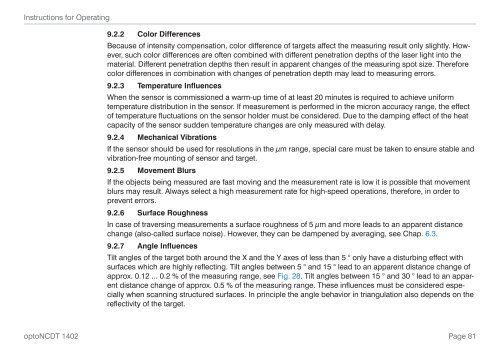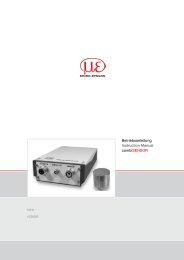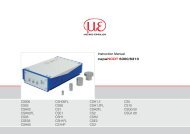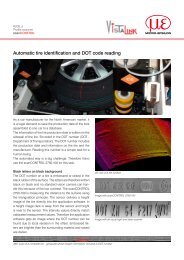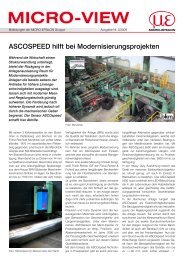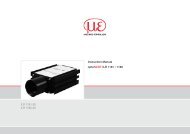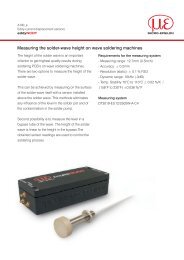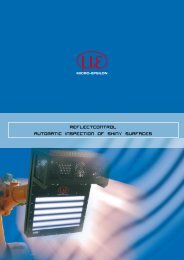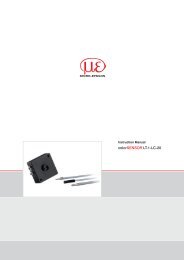Manual optoNCDT 1402 - Micro-Epsilon
Manual optoNCDT 1402 - Micro-Epsilon
Manual optoNCDT 1402 - Micro-Epsilon
You also want an ePaper? Increase the reach of your titles
YUMPU automatically turns print PDFs into web optimized ePapers that Google loves.
Instructions for Operating9.2.2 Color DifferencesBecause of intensity compensation, color difference of targets affect the measuring result only slightly. However,such color differences are often combined with different penetration depths of the laser light into thematerial. Different penetration depths then result in apparent changes of the measuring spot size. Thereforecolor differences in combination with changes of penetration depth may lead to measuring errors.9.2.3 Temperature InfluencesWhen the sensor is commissioned a warm-up time of at least 20 minutes is required to achieve uniformtemperature distribution in the sensor. If measurement is performed in the micron accuracy range, the effectof temperature fluctuations on the sensor holder must be considered. Due to the damping effect of the heatcapacity of the sensor sudden temperature changes are only measured with delay.9.2.4 Mechanical VibrationsIf the sensor should be used for resolutions in the μm range, special care must be taken to ensure stable andvibration-free mounting of sensor and target.9.2.5 Movement BlursIf the objects being measured are fast moving and the measurement rate is low it is possible that movementblurs may result. Always select a high measurement rate for high-speed operations, therefore, in order toprevent errors.9.2.6 Surface RoughnessIn case of traversing measurements a surface roughness of 5 μm and more leads to an apparent distancechange (also-called surface noise). However, they can be dampened by averaging, see Chap. 6.3.9.2.7 Angle InfluencesTilt angles of the target both around the X and the Y axes of less than 5 ° only have a disturbing effect withsurfaces which are highly reflecting. Tilt angles between 5 ° and 15 ° lead to an apparent distance change ofapprox. 0.12 ... 0.2 % of the measuring range, see Fig. 28. Tilt angles between 15 ° and 30 ° lead to an apparentdistance change of approx. 0.5 % of the measuring range. These influences must be considered especiallywhen scanning structured surfaces. In principle the angle behavior in triangulation also depends on thereflectivity of the target.<strong>optoNCDT</strong> <strong>1402</strong>Page 81


